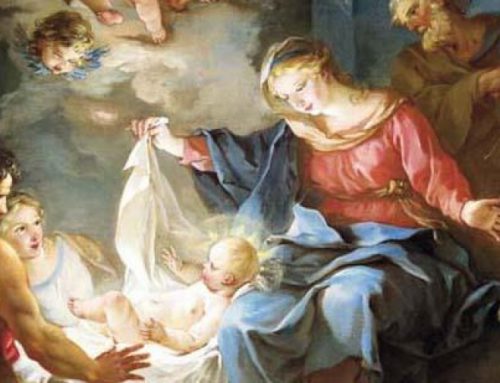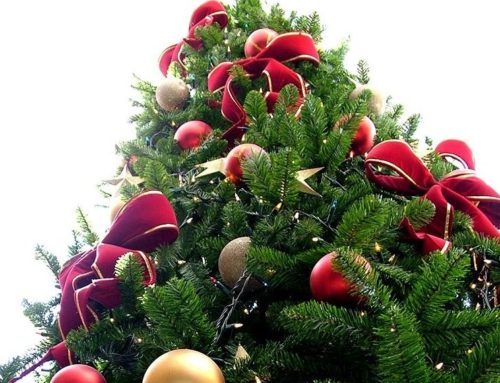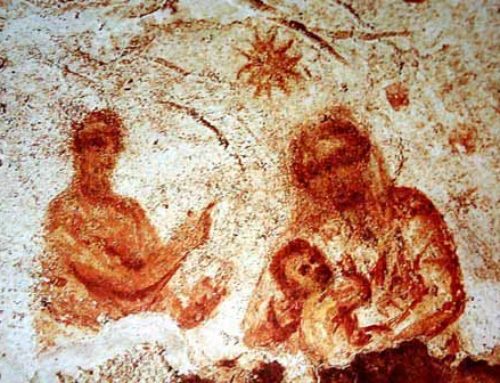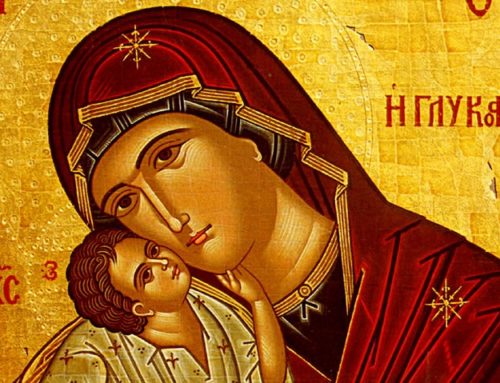-
Angels were seldom represented Christian art before Constantine. The oldest fresco in which an angel appears is the Annunciation scene (second century) of the cemetery of St. Priscilla. A third-century painting of the same subject was discovered by Wilpert in the cemetery of Sts. Peter and Marcellinus; in both representations the Archangel Gabriel is depicted in human form, robed in tunic and pallium. The “Good Angel” (angelus bonus) of the fourth-century syncretistic fresco representing the judgment of Vibia is also depicted in human form, dressed as a sacred personage. The winged angel, for which abundant scriptural references could be adduced, does not appear in pre-Constantinian Christian art, for thereason, probably, that such figures might too readily recall certain favourite subjects of classic art. Another fact worthy of note in this regard is that angels in this first period of Christian art are never represented unless historically necessary, as in the Annunciation scene referred to — and not always even then. In a third-century fresco of the Hebrew children in the furnace, for instance, in the cemetery of St. Priscilla, a dove takes the place of the angel, while a fourth-century representation of the same subject, in the coemeterium majus, substitutes the hand of God for the heavenly messenger.
From the reign of Constantine a new type of angel, with wings, appears in Christian art. The four angels with spears on theciborium of the Lateran Basilica (Lib. Pont., I, 172) were probably of this order. This innovation was evidently suggested by the “Victories”, and similar figures of classic art; but the danger of idolatrous suggestion in such figures was now remote, and historic art, which gradually replaced symbolic, demanded angels with wings. Certain Gnostic sculptures seem to mark the transition from the classic Victory to the winged angel (Cabrol, Dict. d’Arch. Chret., col. 2116 sqq). The oldest existingexamples of winged angels are seen in some bas-reliefs of Carthage and a representation on ivory of St. Michael, both attributed to the fourth century. The latter, part of a diptych in the British Museum, shows the Archangel Michael standing on the upper steps of an architectonically adorned doorway, with a staff in one hand and a globe surmounted by a cross in the other. The figure is admirably executed.
A second development in the artistic conception of angels is marked in the Annunciation scene (fifth century) depicted on the triumphal arch of St. Mary Major’s. Unlike the same subject in the catacombs, the Angel Gabriel is soaring through the air towards Mary, who is seated in the midst of attendant winged angels. From the fifth century angels became a favourite subject in Christian art, no longer merely as figures demanded to complete a historical scene, but very often as attendants on Our Lord and the Blessed Virgin. The mosaic of St. Mary Major’s mentioned above, as well as two mosaics of St. Apollinare Nuovo and St. Vitale (sixth century), Ravenna, are examples of angels in this character. The Archangels Michaeland Gabriel dressed in the military chlamys and bearing military standards inscribed with the word Agios (holy) are represented in mosaics at St. Apollinare in Classe, Ravenna. The Hierarchia coelestis of pseudo-Dionysius exercised an important influence on the artistic conception of angels from the sixth century. Prior to that time, it is true, a distinction was made between different categories of the angelic host, but now the relations of angels to God were represented in the Eastafter the manner of the various grades of court functionaries rendering their homage to the Emperor.
Cults of angels
Early Christian literature, like early Christian art, contains few references to angels. This fact is easily accounted for by the circumstances of the time, for with the popular belief in a multitude of deities it was necessary to lay particular emphasis on the unity of God. An official cult in honour of the angels in the first centuries of Christianity would have made imminent the danger of their being regarded as inferior divinities. Witness the vagaries of Gnosticism. Still, there is sufficient evidence to show that the relations of angels to God were not excluded from Christian teaching. Justin Martyr (First Apology 6) states that the “host of good angels” was held in the greatest veneration, and his contemporary, Athenagoras, refers to the dutiesof angels “whom God appointed to their several posts, to occupy themselves about the elements, and the heavens, and the world” (A Plea for the Christians 10). In the fourth century we find Eusebius of Caesarea distinguishing accurately between the cult rendered to angels and the worship paid to God (Demonstratio evang., III, 3), and St. Ambrose recommendedprayers to them. From the fifth century, churches were frequently dedicated to the angels; Umbria was especially noted in this respect, and in the East churches erected in honour of St. Michael were numerous. In the most ancient litanies theArchangels Michael and Gabriel are invoked after the persons of the Trinity and immediately before the Blessed Virgin.
Catholic Encyclopedia







Leave A Comment
You must be logged in to post a comment.